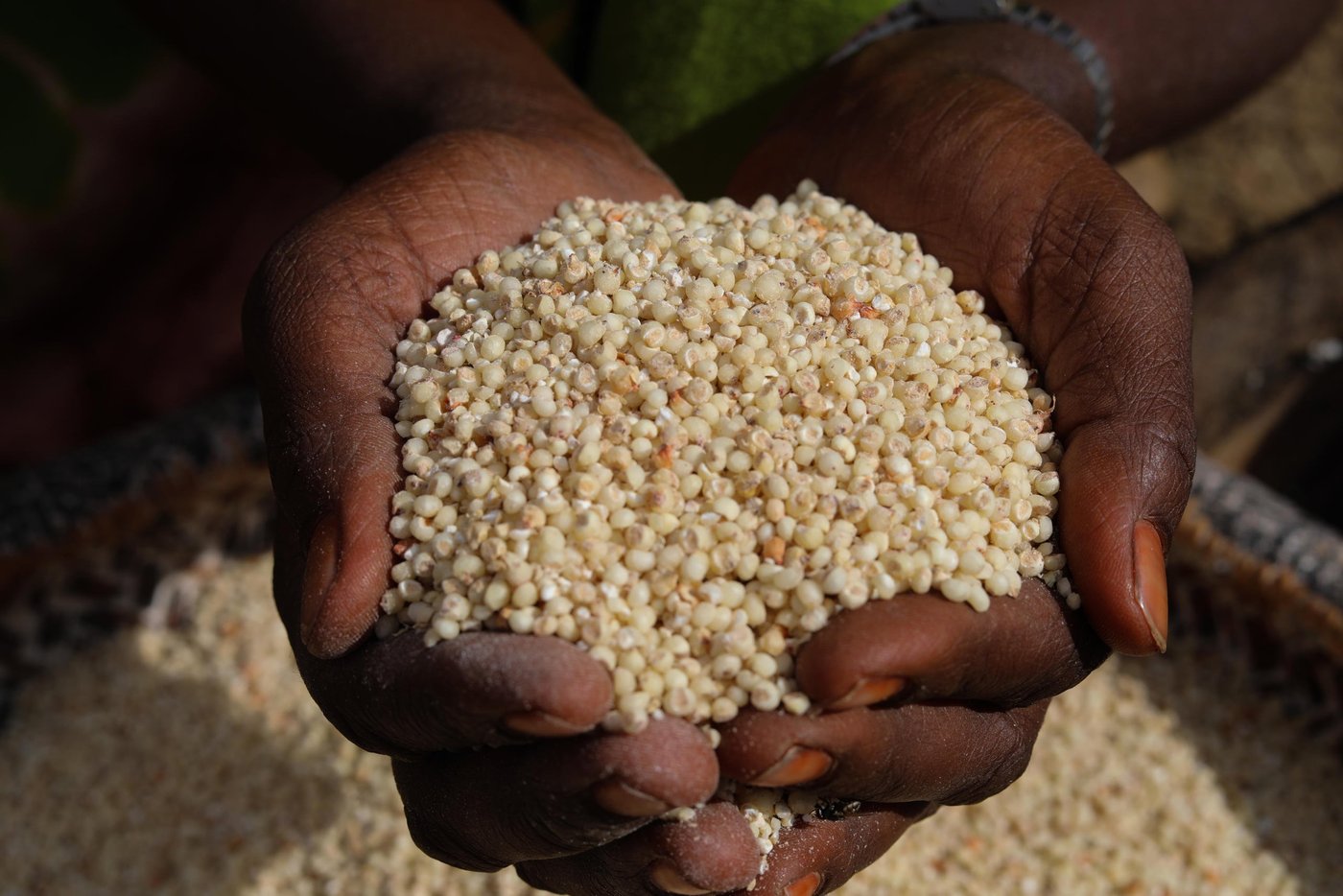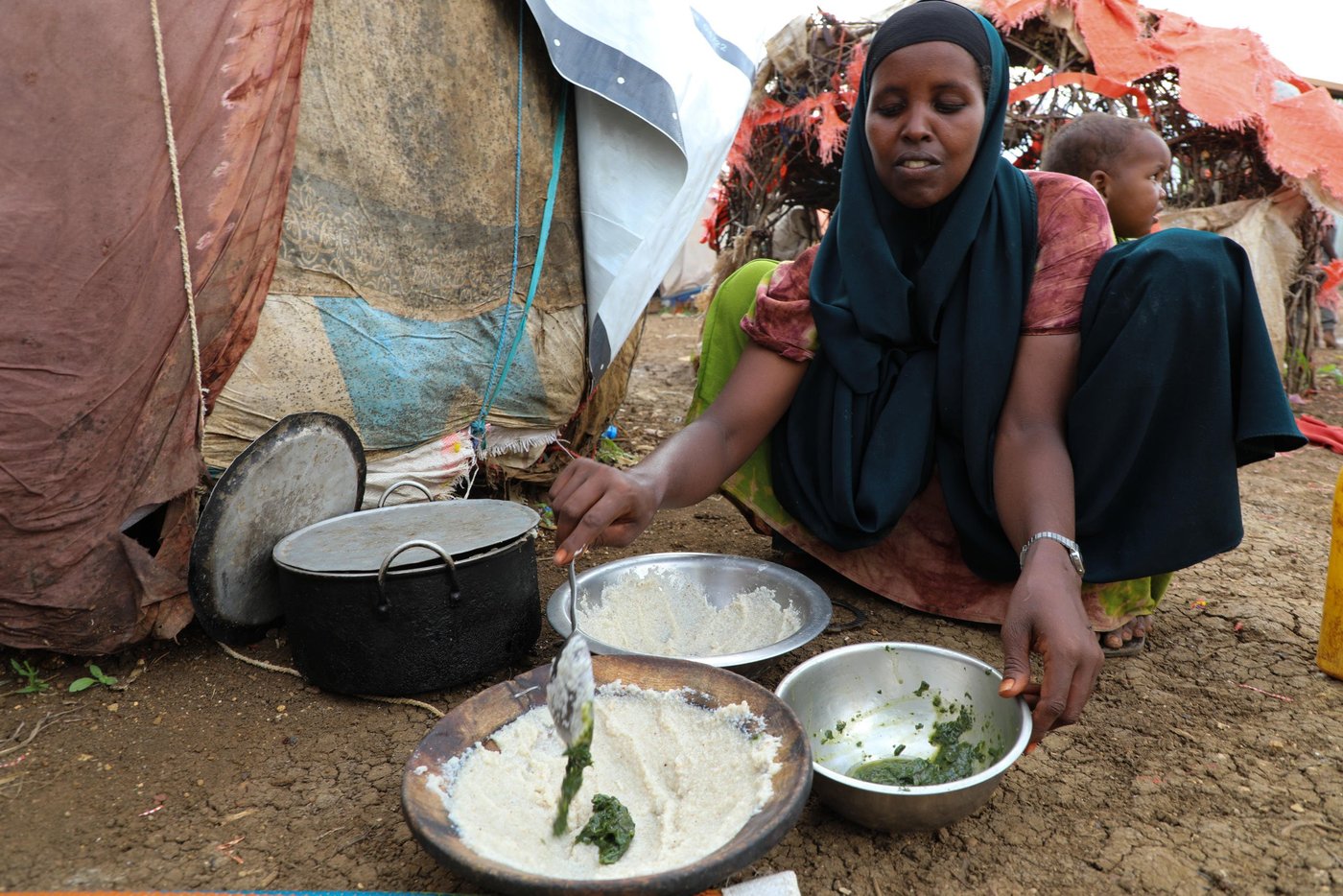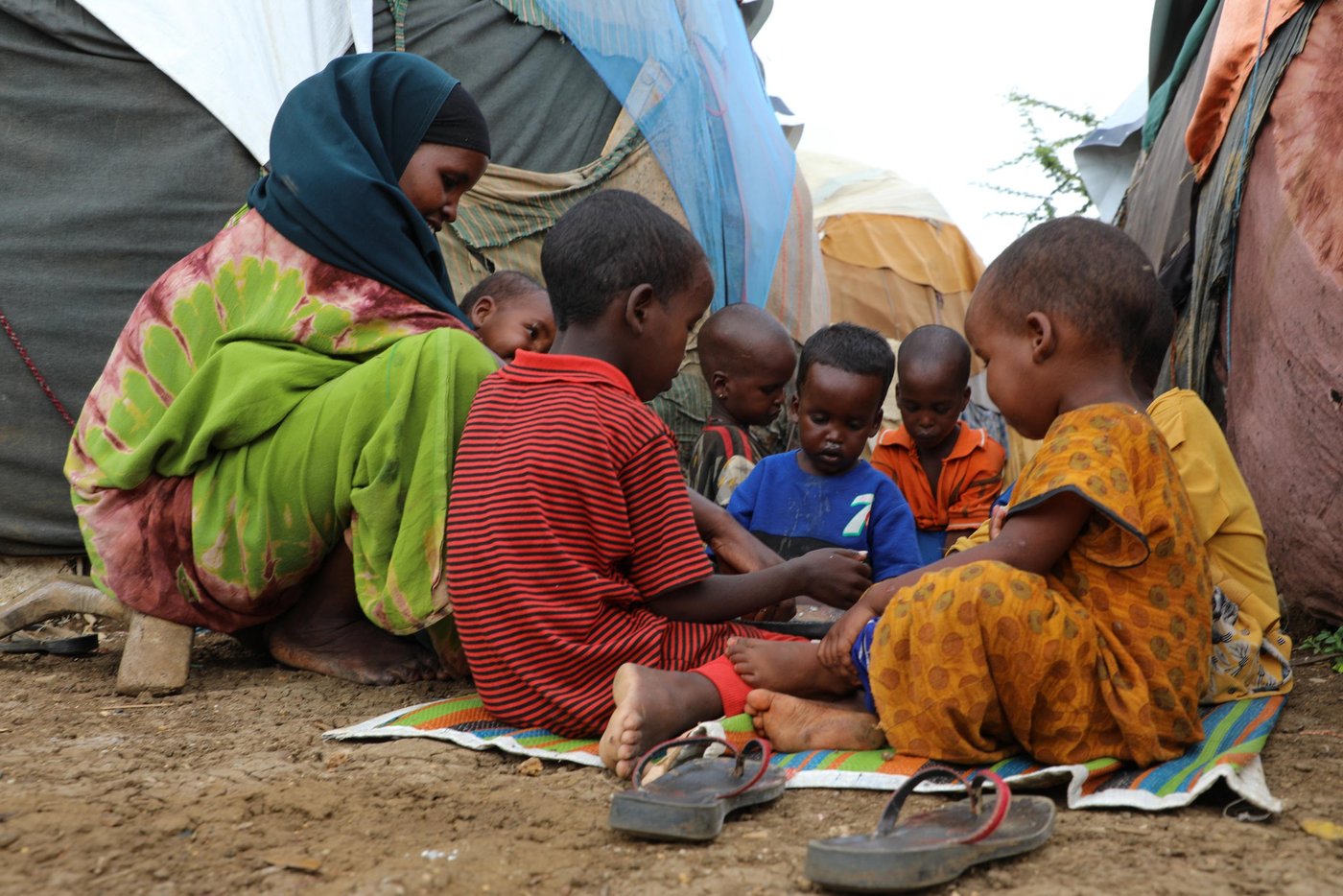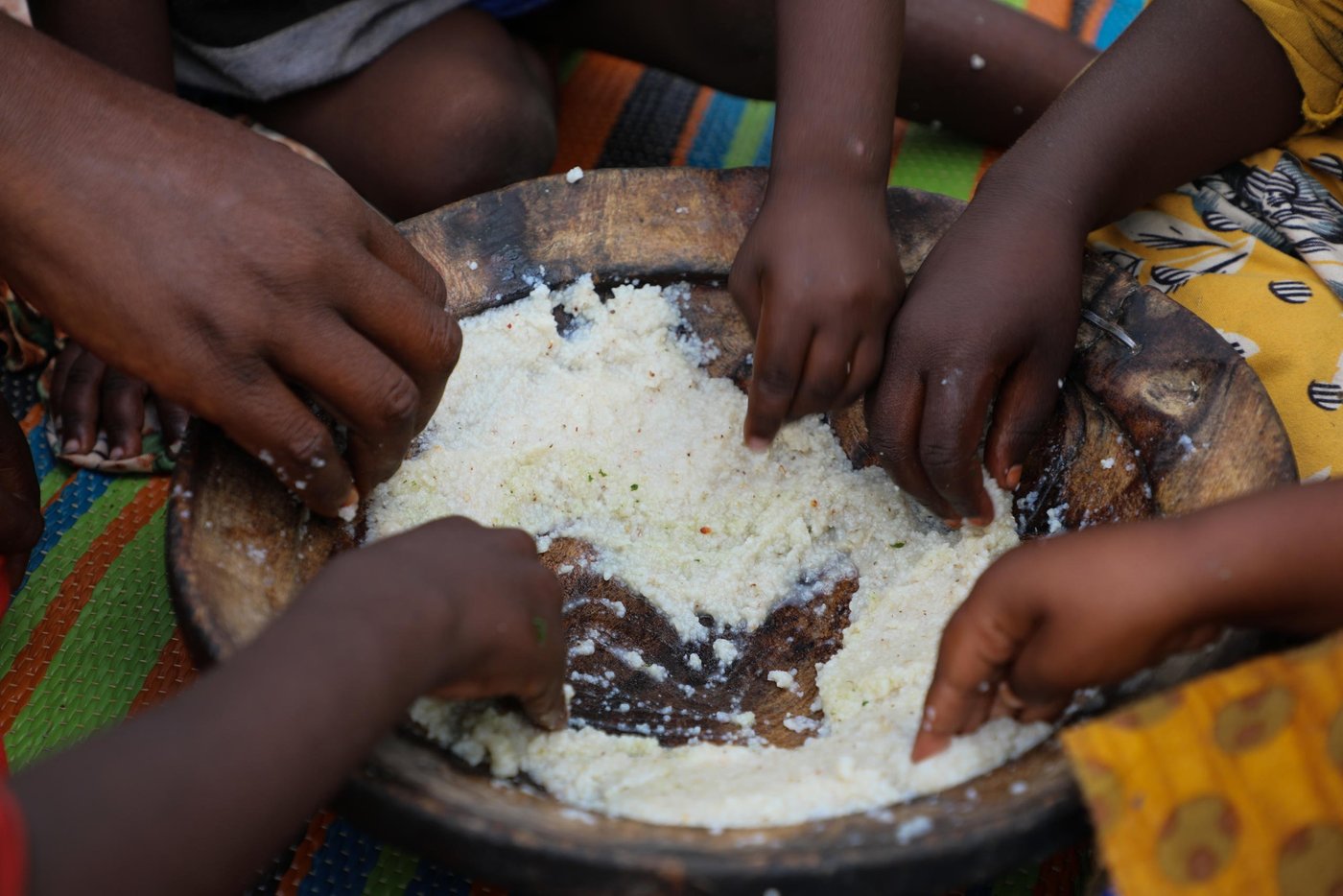“I didn’t have anything to feed my children. I gave them boiled water with sugar to stop them crying for food, but that only brought a little relief before they start crying and asking for food again,” says Maryan Mohamed Ali, 28.
According to the United Nations, the latest analysis shows that between April and June 2023, approximately 6.6 million people in Somalia will likely experience high levels of acute food insecurity.
The situation is particularly dire in rural areas. Displacement camps close to urban areas are growing with people who have had their crops fail and livestock die due to the drought.
The Ukraine war has worsened the food crisis in the country. More than 90 per cent of Somalia’s grains were from Ukraine and Russia, and when the war started, Somalia suffered from a huge shortage of food supplies. When thousands of people were on the verge of famine, the world largely focused on Ukraine.
“There have been nights my children went to sleep without eating food. The hunger made them wake up more than five times in the middle of the night asking for food," says Maryan.”
The impact of the food crisis is particularly severe on children. According to UNICEF, over 1.4 million children in Somalia, nearly half of the country’s under-five population, are likely to suffer from acute malnutrition due to the ongoing drought. Acute malnutrition leads to stunted growth, weakened immune systems, and irreversible damage to cognitive development. The situation is further complicated by the fact that many families cannot afford to send their children to school, as they struggle to even put food on the table.
The root causes of Somalia's food crisis
Somalia is experiencing more frequent and longer-lasting droughts, which are becoming more severe as the climate changes. The country has now faced an unprecedented fifth consecutive failed rainy season, with the risk of a sixth later in 2023. These droughts are leading to the desertification of the country's once fertile land.

The lack of rainfall means that crops cannot grow, leading to widespread crop failures. The droughts have also led to the loss of water sources, making it difficult for people to grow and access clean drinking water.
The country has also experienced locust swarms, which have destroyed crops and made it difficult for communities to grow food.
The conflict has been a tragedy that has plagued the country for decades and has worsened the food crisis situation in the country. The conflict has also made it difficult for rural communities to live in rural areas and grow crops. This has led to widespread poverty and hunger.
The food crisis in Somalia is devastating. Families are struggling to find food to eat, and children are dying from malnutrition.
All this combined has forced millions of people to flee their homes.
Communities affected by Somalia's food crisis
The impact of Somalia's food crisis is not just a statistical fact but a human tragedy as well. Behind the numbers are families struggling to survive in the face of unimaginable hardship.
Maryan has seven children to feed. She lives in the Qaydar-adde displacement camp in Baidoa, one of the main destinations of people displaced by the severe drought in Somalia.
She came to Baidoa ten months ago. She used to live in Madhayta area of the Bakool region before the lack of food forced her to leave. She left her husband back in the village to take care of his sick parents, leaving her a huge burden on her shoulders.
Maryan's family is one of the many affected by the food crisis. They had lived in the same area for generations, relying on agriculture and livestock production for their way of making a living. But when the rains failed, their crops withered and their animals died. They were forced to sell the little they had left to buy food and water, but it was never enough. Eventually, they had no choice but to leave their home and seek refuge elsewhere.
After a long journey, they finally arrived in Qaydar-adde displacement camp.

“I used to be a farmer, and we lived a good life compared to the current situation,” says Maryan. “We had a big farming space. We used to grow sorghum and cowpeas, but severe droughts have made it impossible for us to grow crops anymore after five consecutive failed rainy seasons. We are now left with nothing.”
“There have been droughts in the past. After missing rainfall in a season, we used to get the rainfall in the next season and then life got back to normal. But this time is totally different. This is the worst drought I have ever seen.”
She was forced to flee in search of food. Now in the camp, Maryan and her children are surviving on one meal a day, but that’s not enough. Her youngest child is severely weak, and she cannot afford to feed her nutritious food.
Like thousands of other women who are now living in Baidoa’s makeshift camps, Maryan does casual labour to earn an income and buy food for her children.
“The little money I earn can only cover one meal a day. As you can see now, I am feeding my children with sorghum flour with green vegetables. No meat, no soup, and no milk because I don’t have money to buy all these.”
The majority of displaced people are low-wage workers known as casual labourers. For these workers, a source of income is unreliable.
“Sometimes, I get back home without food. As a mother, this is the most difficult time. It hurts me a lot to see them crying for food, and I have nothing to feed them.”
Humanitarian organisations, like the Norwegian Refugee Council (NRC), are providing assistance to these families, but the assistance is not enough due to the scale of the food crisis.
“Before, we used to receive cash or food aid from humanitarian agencies, but we haven’t received anything these days. We are facing difficulties, and we are unable to access food and other basic services. As a mother, I don’t want my children to stay hungry anymore.”

Crop failures and food insecurity
Over 70 per cent of the population is now bearing the brunt of the changing climate in Somalia. Severe droughts, unpredictable rainfall, and rising temperatures have led to the loss of crops, livestock, and the livelihoods of the pastoral communities.
The situation is exacerbated by the conflict in the country, which has made it difficult for aid organisations to provide assistance.
The situation is pushing millions of people into hunger. More support is needed to put an end to this severe food crisis.


